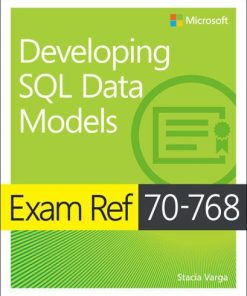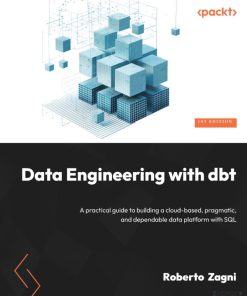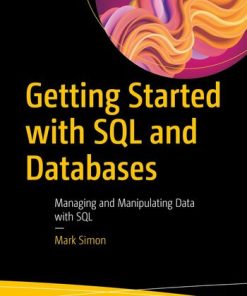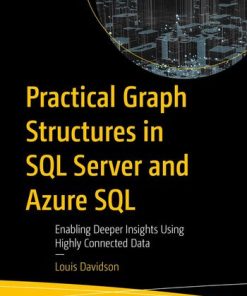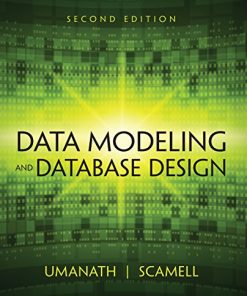(Ebook PDF) NoSQL and SQL data modeling bringing together data semantics and software 1st edition by Ted Hills 1634621093 978-1634621090 full chapters
$50.00 Original price was: $50.00.$25.00Current price is: $25.00.
NoSQL and SQL data modeling: bringing together data, semantics, and software 1st edition by Ted Hills – Ebook PDF Instant Download/DeliveryISBN: 1634621093, 978-1634621090
Full dowload NoSQL and SQL data modeling: bringing together data, semantics, and software 1st edition after payment.
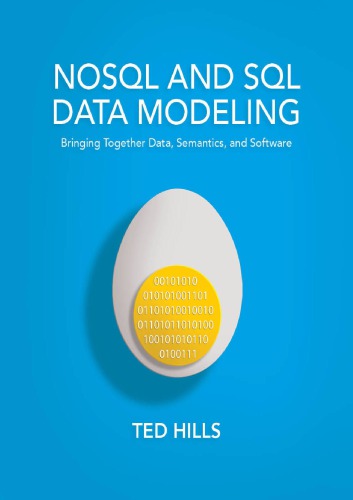
Product details:
ISBN-10 : 1634621093
ISBN-13 : 978-1634621090
Author: Ted Hills
How do we design for data when traditional design techniques cannot extend to new database technologies? In this era of big data and the Internet of Things, it is essential that we have the tools we need to understand the data coming to us faster than ever before, and to design databases and data processing systems that can adapt easily to ever-changing data schemas and ever-changing business requirements. There must be no intellectual disconnect between data and the software that manages it. It must be possible to extract meaning and knowledge from data to drive artificial intelligence applications. Novel NoSQL data organization techniques must be used side-by-side with traditional SQL databases. Are existing data modeling techniques ready for all of this? The Concept and Object Modeling Notation (COMN) is able to cover the full spectrum of analysis and design. A single COMN model can represent the objects and concepts in the problem space, logical data design, and concrete NoSQL and SQL document, key-value, columnar, and relational database implementations. COMN models enable an unprecedented level of traceability of requirements to implementation. COMN models can also represent the static structure of software and the predicates that represent the patterns of meaning in databases.
NoSQL and SQL data modeling: bringing together data, semantics, and software 1st Table of contents:
Part I Real Words in the Real World
Chapter 1 It’s All about the Words
References
Chapter 2 Things: Entities, Objects, and Concepts
Chapter Glossary
Containment
Composition
Chapter Glossary
Collections of Objects
Sets of Concepts
Types and Classes
Types Designate Sets
Three Aspects of Types and Classes
Chapter Glossary
Part II The Tyranny of Confusion
Logical E-R Data Models
Multiple Levels of Abstraction
Limitations of E-R Modeling Notation
Lack of Reusable Composite Types
Representing Individual Entities
Entity
E-R Terms Mapped to COMN Terms
References
Class Diagrams
Lack of Keys
Lack of Concept
Type and Implementation Class
UML Terms Mapped to COMN Terms
References
Facts and Relationships-
Incompleteness
Terminology
References
Predicates and RDF Statements
Doubles and Quadruples
Terminology
Classes, Objects, Types, and Variables
Terminology
Part III Freedom in Meaning
Material Objects
Objects with States
Meaning of States
Objects with More States
Methods
Material Objects in Computers
Summary
Composing Objects
Chapter Glossary
Types in Programming and Databases
Classes in Object-Oriented Software
Separating Type and Class
Simple Types
Chapter Glossary
Composite Types as Logical Record Types
Types Representing Things in the Real World: Identification
Stepwise Refinement and Completeness
Types Representing Other Types
Measures as Composite Types
Nested Types
Modeling Documents
Arrays
References
Subtypes
Subclasses
Subtypes and Extensions: Perfect Together
Using Subtype Variables and Values
Projection: The Inverse of Extension
Chapter Glossary
Information
Is Information Always True?
From Information to Data
Variable Names
It’s Just Data
“Unstructured Data” and “Semi-Structured Data”
Chapter Glossary
Arrivals and Departures
Labeling Relationship Lines
Cleaning Up the Model
Roles, Predicates, and Relationships
Chapter Glossary
The Order of Rows
The Uniqueness of Rows
The Significance of Columns
Technical Relational Terminology
Tuple and Relation Schemes
Data Attribute Versus Attribute
Composite Data Attributes
Relational Operations
SQL Versus the Relational Model
Terminology
Chapter Glossary
What’s Different about NoSQL?
ACID
BASE and CAP
Key/Value DBMS
Graph DBMS
Document DBMS
Columnar DBMS
Tabular DBMS
References
Part IV Case Study
Analysis: Documenting Real-World Entities
Logical Data Modeling: Designing the Data
Physical Data Modeling: Designing the Implementation
People also search for NoSQL and SQL data modeling: bringing together data, semantics, and software 1st:
what is nosql data model
when use sql and nosql
nosql database vs data lake
nosql database modeling
nosql database data models
You may also like…
Computers - Artificial Intelligence (AI)
Predictive Modeling in Biomedical Data Mining and Analysis 1st edition
Computers - Databases
Computers - Organization and Data Processing
Computers - Programming
Getting Started with SQL and Databases: Managing and Manipulating Data with SQL Mark Simon
Computers & Technology
Computers - Databases
Getting Started with SQL and Databases: Managing and Manipulating Data with SQL 1st Edition





